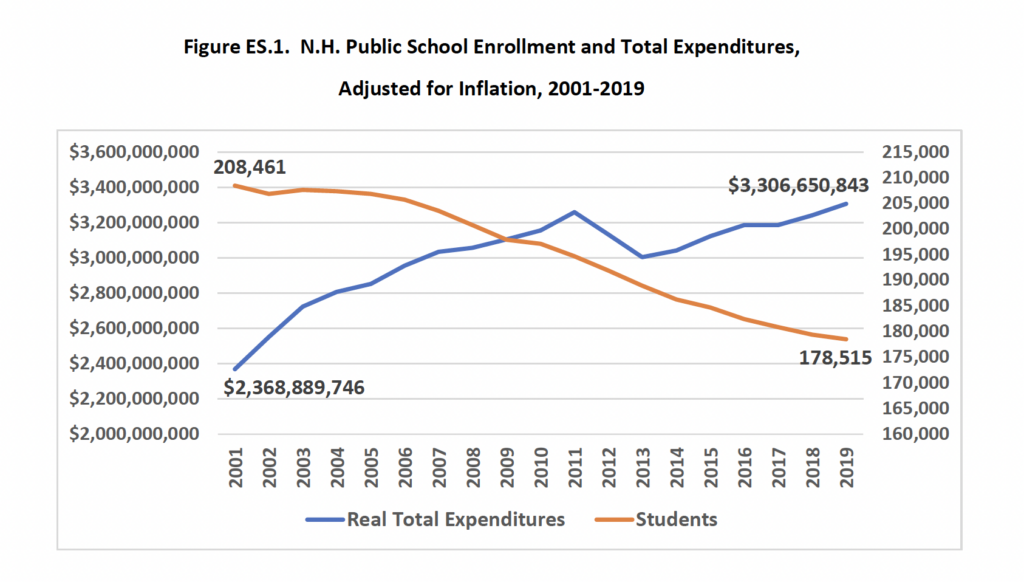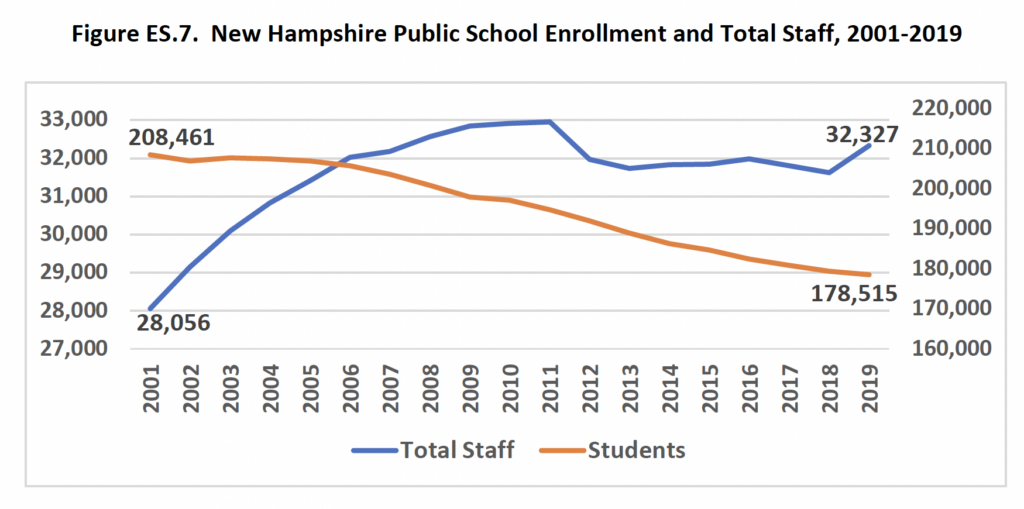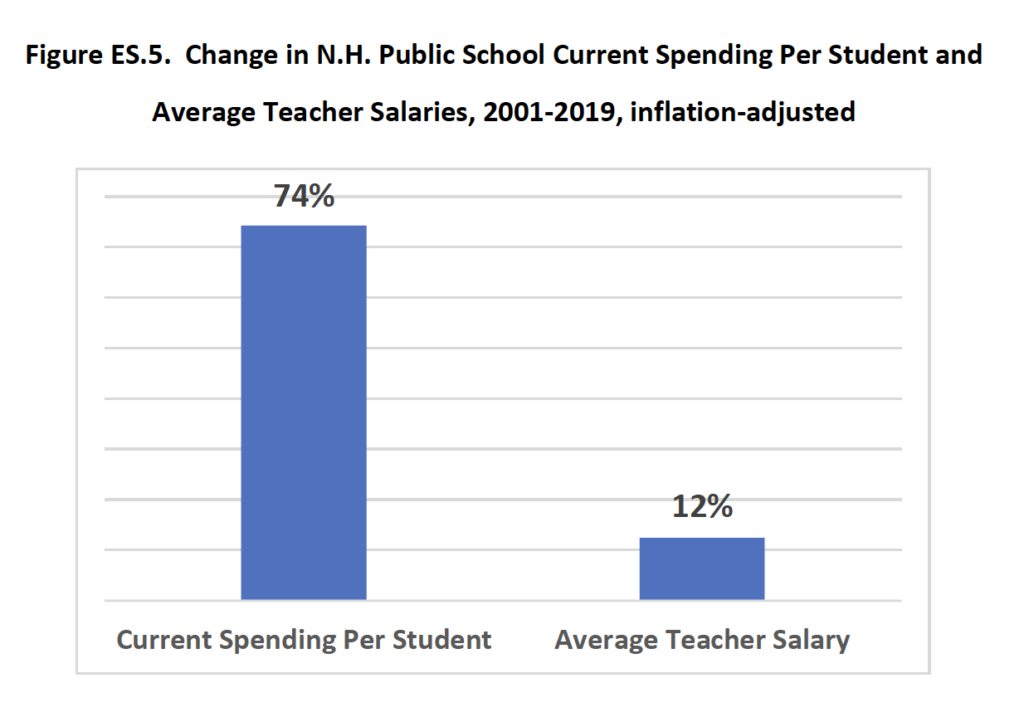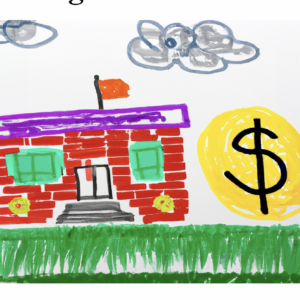Taxpayers poured an additional $1.5 billion into public schools even as student enrollment fell by 14 percent, a new study from the Josiah Bartlett Center for Public Policy (JBC) found.
“From the 2000-2001 school year to the 2018-2019 school year, New Hampshire public school district spending increased by more than $1.5 billion in nominal dollars, or $937 million when adjusted for inflation,” according to the report.
“This massive spending increase–40 percent when adjusted for inflation–occurred as public school enrollment was cratering. From 2001-2019, New Hampshire district public school enrollments fell by more than 29,946 students or 14 percent.”
The numbers are even more dramatic, JBC President Drew Cline told NHJournal when you look at operating expenses — the day-to-day costs of operating k-12 schools — and take out capital and debt spending.

(Credit: Josiah Bartlett Center for Public Policy)
“Current spending increased by 74 percent from 2001-2019, and at the same time, our test scores were flat,” Cline said. “So you’re spending almost a billion dollars more to educate almost 30,000 fewer students, and you’re not getting any increase in your test score for that.”
By every measure, taxpayer funding of K-12 schools in the Granite State has surged. In 2001, there were 208,461 students enrolled in the state’s public schools, and taxpayers spent just over $1.7 billion on schools. By 2019, enrollment had fallen to 178,515, but taxpayer spending had risen to $3.3 billion.
And the numbers in the JBC study don’t include the surge in school spending or plunge in enrollment due to the 2020 COVID-19 pandemic.
“On a per-pupil basis, New Hampshire public school spending increased by 66.8 percent, adjusted for inflation,” according to the report. “In nominal dollars, New Hampshire spent $8,245 per student in 2001. That figure reached $18,905 in 2019, representing a 129 percent increase before accounting for the cost of living increases.
“Adjusting for inflation, the increase was a stunning 66.8 percent. The increase was so large that New Hampshire went from 4 percent below the national average in per-pupil expenditures in 2001 to 25.7 percent above the national average in 2019.”

The report comes just days after the GOP-controlled House of Representatives passed a budget that would increase state funding of K-12 schools by $158 million over the next two years. And when Democrats controlled the legislature in 2019-2020, the budget added $138 million in new spending.
This data runs counter to the arguments made by many New Hampshire Democrats and their political allies in the teachers’ unions, who still insist New Hampshire taxpayers should be spending even more on a school system that is shrinking every year.
NHJournal reached out to Senate Democratic Leader Donna Soucy (D-Manchester), Senate Education Committee member Suzanne Prentiss (D-Lebanon), and House Education Committee member Mel Myler (D-Hopkinton) to comment on this data. They all declined to respond, as did the leaders of the state’s two largest teachers unions.
Asked if the JBC study is anti-teacher, Cline, who also serves as head of the New Hampshire State Board of Education, replied, “Absolutely not.”
“While spending went up by a huge percentage, most of it went to hiring staff, and a large portion of that went to hiring administrative staff. When you look at teacher pay, it didn’t go up as much as you would expect. And when you compare New Hampshire to other states, particularly Massachusetts, the numbers don’t look so good.

“We actually think there’s a case to be made for increasing teacher pay,” Cline said. That’s what the numbers show.”
There has certainly been an explosion in the number of administrative staff.
“While the number of students served in New Hampshire public schools decreased by 14.4 percent between 2001-2019, the number of full-time equivalent (FTE) total staff increased by 15 percent,” according to the report. “Public schools nationally also increased their staffing by 15 percent during this period. But unlike New Hampshire, which experienced a large enrollment decline, the number of students served nationwide increased by 7.4 percent.”
And while some Granite Staters like to mock the big government spending in “Taxachusetts,” Bay State school districts actually hire fewer staff to teach more students than New Hampshire.
“Massachusetts public schools spend their monies very differently than New Hampshire public schools do,” according to the report. “New Hampshire public schools have more staffing. New Hampshire public schools have 18.2 FTE staff per 100 students vs. 13.9 per 100 students in Massachusetts public schools.”
As a result, “Massachusetts public schools are able to pay their teachers higher salaries. The raw difference is $82,042 in the Bay State vs. $59,182 in New Hampshire. Taking into account the cost of living, Massachusetts teachers are paid $7,606 more on average than New Hampshire teachers, a difference of almost 13 percent.”



